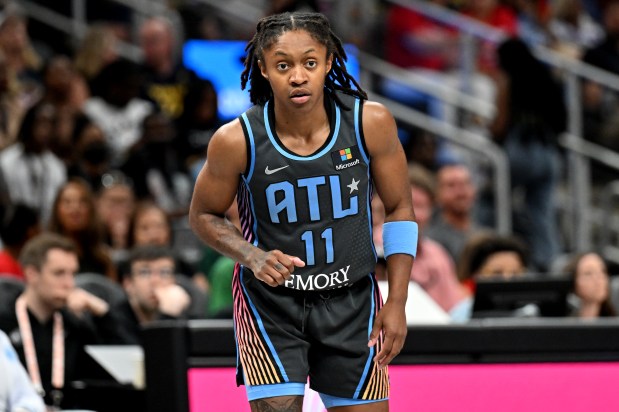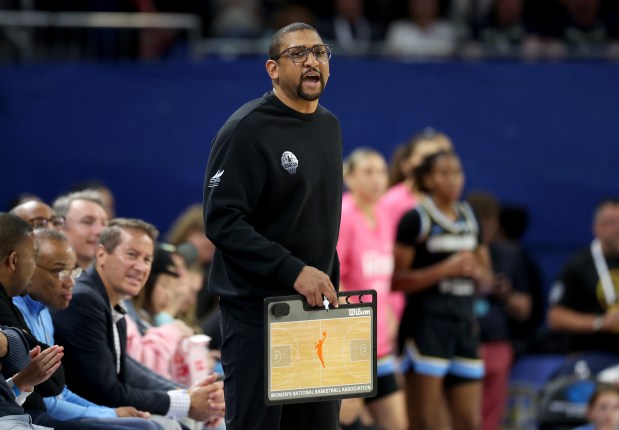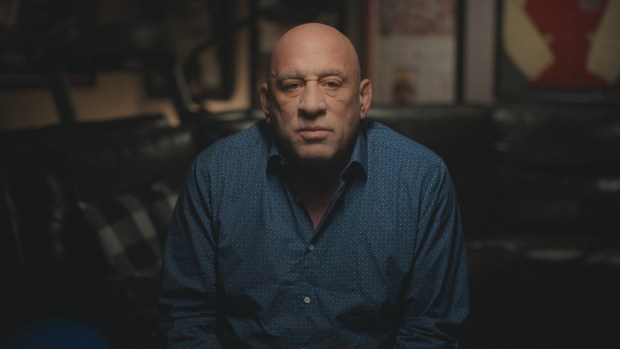The Chicago Sky reached the halfway point of the 2024 season Sunday with an 8-12 record after losing on the road to the Seattle Storm.
Despite their losing record, the Sky have celebrated notable accomplishments this season, including the breakout rookie performance of All-Star Angel Reese and the ascension of guard Chennedy Carter to become the team’s leading scorer.
Here are seven questions facing the Sky in the second half of the season.
1. Will the Sky make the playoffs?
Despite being forecast before the season as a bottom-four team, the Sky are on track to earn the final postseason berth. They’re in eighth place in the WNBA, percentage points behind the seventh-place Indiana Fever (9-13) but the same number of games behind first.
The Sky are 4-6 in their last 10 games and 5-5 on the road, the league’s fifth-best road record. They’re one game ahead of the Atlanta Dream (7-13), whom they face Wednesday at Wintrust Arena (11 a.m., Marquee) as they try to add some separation.
This roster likely doesn’t have the juice for a deep playoff run, but qualifying for the postseason and getting rookies Reese and Kamilla Cardoso their first round of playoff experience would be an overall win for a rebuilding team.
2. Will the Sky sign an additional player after waiving Kysre Gondrezick?
This is the key focus for the front office in the coming weeks. After placing Elizabeth Williams on the injured list with a season-ending torn meniscus, the Sky waived Gondrezick to clear room for a signing.
The Sky have a clear need to fill with the extra roster spot: outside shooting. While Reese and Cardoso are ensuring dominance on the boards — the Sky lead the league with 36.4 rebounds per game — the roster lacks production behind the arc. The Sky are last in made 3-pointers (4.4 per game), attempts (14.6 per game) and percentage (30.1%), and any improvement in either volume or efficiency would be a major lift for the offense.
Ideally the Sky would have signed Brynna Maxwell to a rookie contract after drafting her with the No. 13 pick this spring. But Maxwell suffered a knee injury within days of arriving in Chicago and had not recovered to the point of joining a roster when the Sky waived Gondrezick last month.
It has been more than a week since the Sky waived Gondrezick — so why is it taking so long to bring in a new player? The likely answer is the front office was waiting to reach eligibility for seven-day contracts, which can’t be used until the second half of the season.
Now that the Sky have played 20 games, they can cycle through players on lower-commitment seven-day contracts, which still count toward the salary cap. That would be a likely route to sign a waived player such as Dyaisha Fair or Crystal Dangerfield, either of whom would provide a shooting boost despite struggling to hold on to roster spots because of their size.
3. What about a midseason trade?
The trade market is another potential outlet for the Sky to bolster their roster. This year’s trade deadline is Aug. 20 — five days after play resumes following the Olympic break — which means the front office has six weeks to potentially strike a deal.
But given the history of the league, a midseason trade is incredibly unlikely. There was only one in the entire league last season, a July deal in which the Washington Mystics sent Amanda Zahui B to the Indiana Fever in exchange for Queen Egbo. Only five midseason trades have been made over the last six seasons.
That doesn’t mean a trade is impossible. The Sky were involved in arguably the most high-profile midseason trade in league history in 2015, when Sylvia Fowles declined her player option, sat out the first half of the season and eventually leveraged a trade to the Minnesota Lynx, with whom she won two championships.
For the Sky, the improbability of a trade also comes down to cost-benefit analysis. They can’t move any of their highest-value players, which means a trade would come down to improving in the margins. If the Sky want to move on from Marina Mabrey’s contract — the heftiest on the roster at just over $206,000 per year — that would be an easier deal to negotiate in the offseason. And only four players (Reese, Cardoso, Mabrey and Lindsay Allen) are signed past this season, so the Sky will see natural turnover in the offseason.
4. How should the Sky use the Olympic break?
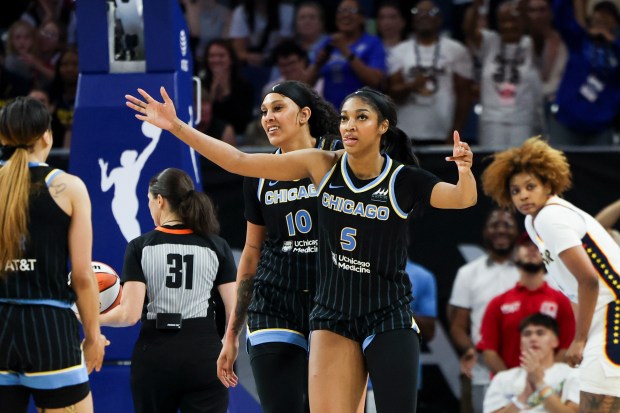
Rest. That’s the most important to-do item — especially for Cardoso and Reese, who haven’t had a break since their college seasons began in October.
The Olympic break will give teams nearly a full month’s reprieve from games, from July 21 to Aug. 14. Because the Sky don’t have any Olympians, they will have the opportunity for full-team workouts during that time, a notable leg up for a group that has lacked cohesion even after 20 games together.
Other clear priorities for the Sky during the break are drilling long-range shooting for the entire roster and smoothing out the wrinkles in the pick-and-roll game, especially with Cardoso.
5. Why isn’t Marina Mabrey closing games?
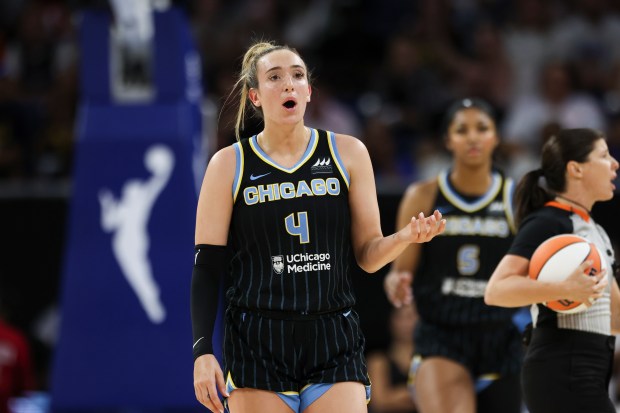
Coach Teresa Weatherspoon made a notable adjustment in recent weeks, pulling Mabrey out of closing units in clutch games in favor of wing Diamond DeShields. The Sky are 5-10 in games with a margin of five or fewer points in the final five minutes.
Mabrey is suffering a shooting slump this season, tumbling from the team scoring lead to third behind Carter and Reese in the course of a month. She shot 35.4% from the field and 26.8% behind the arc as her average production dropped to 12 points over the last 10 games.
And those percentages are even lower in the clutch. Mabrey is shooting 18.2% from the field and 44.4% from the free-throw line in clutch minutes. She hasn’t made a clutch basket or free throw in the last month while the Sky went 2-6 in tightly contested games with Mabrey in the closing unit.
DeShields is shooting 25% from the field and 50% from the line in a smaller sample size, averaging only 1.5 clutch minutes over six games. But if Weatherspoon is trying to create marginal improvements to eke out more close games, it’s clear she has identified Mabrey as holding the team back in these moments.
However, benching Mabrey in the clutch could have negative effects for the Sky. The only way to break a player out of a slump is to allow her to play through it — especially when it’s the highest-paid player on the roster. And although DeShields has been marginally better than Mabrey in clutch moments, she doesn’t provide enough of a lift to leave the team’s supposed best shooter on the bench.
If the Sky want to get out of their clutch slump, they might have to let Mabrey work it out on the court — even at the risk of more close losses.
6. Is Chennedy Carter at risk of a suspension?
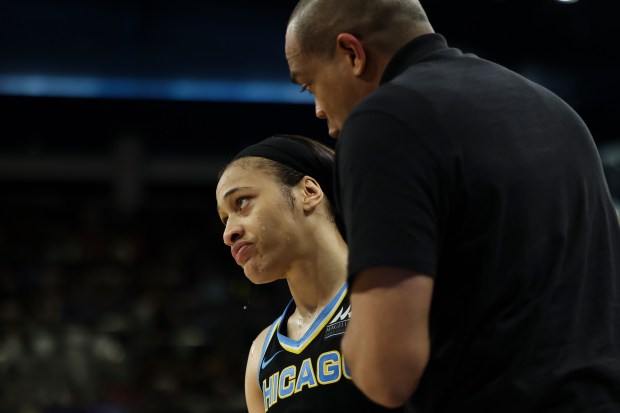
Carter picked up flagrant fouls in back-to-back games in Seattle last week, edging her closer to a one-game suspension. The league tallies both flagrant and technical fouls throughout the season, but the system for accrual-based punishment varies.
Technicals are assessed a combination of fines and suspensions on an increasing scale: $200 for the first three, $400 for the next three and $800 plus a one-game suspension for the seventh technical of the season. After that a player receives an $800 fine for each additional technical and a one-game suspension for every other technical (ninth, 11th, etc.). Natasha Cloud leads the league with five technicals this season.
Fines are not assessed for flagrant fouls, but an accumulation of such violations can similarly trigger a suspension. Players receive one point for every flagrant-1 foul and two points for every flagrant-2 violation. A player with four points will receive a one-game suspension for her next flagrant-1 foul. At six or more points, the suspension is increased to two games.
Carter leads the league with three flagrant points, a risk factor that Weatherspoon said she will address with the guard. But it’s a difficult issue to address; both of Carter’s flagrant violations in Seattle resulted from basketball plays in which she was attempting to block a shot.
In addition to leading the team in scoring, Carter has been a defensive spark for the Sky with 1.3 steals per game. They can’t afford to lose her to a suspension, but they also can’t afford to dial back her defensive intensity. Weatherspoon might urge Carter to restrain herself around the rim — at 5-foot-9, she’s at a wingspan disadvantage to cleanly block taller opponents — but a major adjustment isn’t needed.
7. Is there a future for Dana Evans with the Sky?
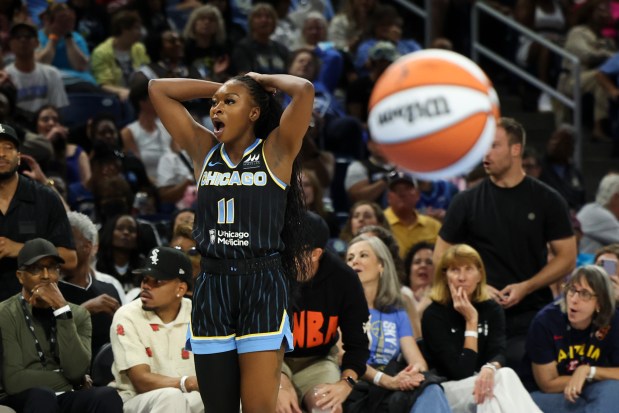
The window likely has shut for Evans to carve out a long-term spot on the Sky. After finishing third in Sixth Player of the Year voting in 2023, Evans lost the starting point guard position for the second consecutive season. Although her productivity has remained relatively stable — 8.3 points, 3.2 assists, 1.0 steal and 1.5 turnovers per game — Evans struggled to provide the offensive pop the Sky needed at the start of the year.
Not everything is negative about Evans’ performance this season. For instance, she’s having one of the best 3-point shooting years of her career with a 36.2% clip on 2.9 attempts per game. But the Sky need to emphasize higher-volume shooting guards in the offseason, and Evans has not provided enough productivity as either a facilitator or a shotmaker to fit that mold.
Given Evans’ inability to hold on to a starting job under two coaches in Chicago, it’s unlikely the Gary native will remain with her local team when she becomes a free agent this winter.


